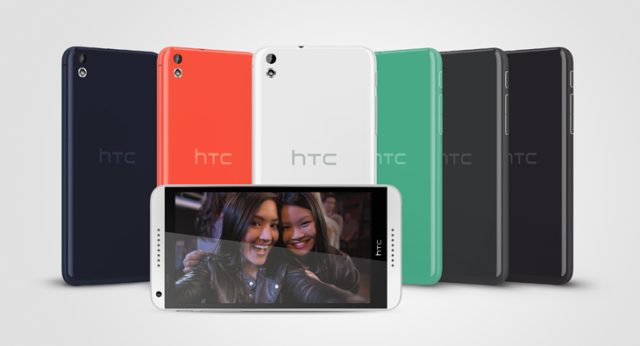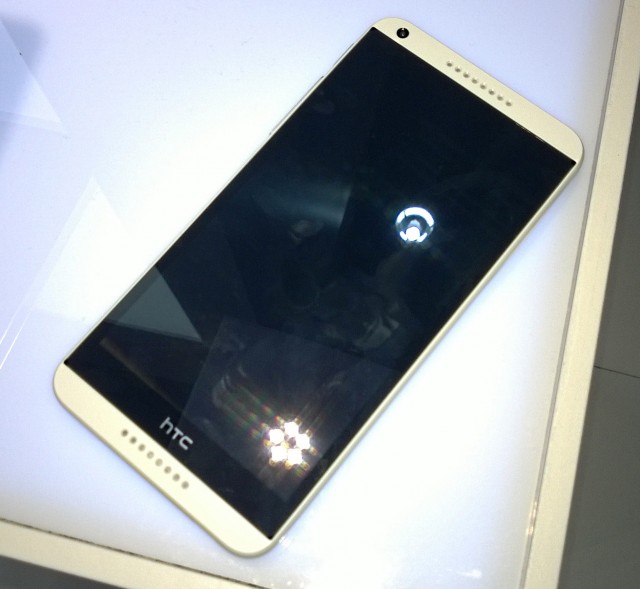
HTC is in a rather weird spot with its new Desire 816 phone. The phone has been announced, so we know what it looks like and what its specs are—but the software hasn't been revealed yet. The company has some units running Sense 5.5 to play around with, but the phone will actually launch with Sense 6. We'll probably get a look at Sense 6 when the company reveals the next HTC One next month, but until then, there's hardware with no software.
And it looks like some pretty nice hardware. The company is calling it a "flagship midrange" phone: although aiming at around the $400 (off-contract) to free (on-contract) price range, the company nonetheless wants it to be a well-built, pleasurable, high quality device. This puts it in much the same ballpark as the Moto X, another phone with midrange pricing and specs but a high-end build and feel.
As a testament to its midrange nature, the 5.5-inch screen is only 1280×720. I haven't seen how it fares in bright daylight, but in the convention halls of MWC it looked great. Blacks were very black, colors were vibrant, and brightness was more than sufficient. Sure, it's not 1080p, but for using apps, browsing the Web, and taking photos, I didn't feel like I was missing out. It's midrange, but it ain't cheap.

The processor is a quad core Snapdragon 400, clocked at 1.6GHz, I believe using A7 cores. HTC was reluctant to let me benchmark it since the firmware is an interim build pending the completion of Sense 6, but flicking around Android and Sense, it felt plenty quick enough. I don't doubt that the Snapdragon 801 in the latest Galaxy S5 is technically a lot faster, but in the (admittedly limited) use of the Desire 816, I was never concerned that it felt slow. A healthy 1.5GB of RAM probably helps in that regard.
The cameras are both reasonably high-spec (even on a midrange phone, photography is so important that it doesn't make sense to skimp here), with 13MP rear and 5MP front-facing sensors. If nothing else, that should enable plenty of high-quality selfies.
The areas where the cost-savings are most noticeable are probably storage and Wi-Fi. There's only 8GB internal storage (though a microSD slot means that up to 64GB can be added), and the Wi-Fi only supports 2.4GHz operation. There's no support for the (typically less cluttered) 5GHz bands.
Unlike the metal of the HTC One, the Desire 816 is glossy polycarbonate. It feels solid and comfortable in the hand. A bunch of colors and material finishes will also be available to give the phone a personal touch.
In fact, the only thing I don't really like is the goofy name. The apparently random "816" makes the phone sound a lot more mundane than it is.
Phones like this will never satisfy someone whose only concerns are specifications, benchmarks, and numbers. But for everyone else, my initial reaction is that it's a nice phone that will give most people everything they need from a smartphone in a package that's quite a bit more affordable than the premium flagships. With midrange handsets able to boast strong design and high quality, I'm not even sure anyone needs the flagships any more. The midrange is where it's at.
reader comments
52